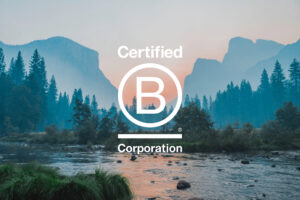Are you feeling overwhelmed and struggling to find ways to reduce stress? If so, consider cognitive behavioral therapy (CBT) relaxation techniques. CBT is used in psychotherapy to help people cope with everyday stressors. They allow us to understand how our thoughts, feelings, and behaviors influence each other and how they interact with our environment. This blog post will provide an overview of several CBT relaxation techniques to manage stress levels and start living a balanced life.
What Is Cognitive Behavioral Therapy?
Cognitive behavioral therapy is a type of psychotherapy used to treat various mental health conditions, including depression, anxiety, and phobias. CBT is based on the premise that our thoughts, feelings, and behaviors are interconnected and that changing one aspect of this triangle can positively impact the other two.
CBT relaxation techniques can be used for relaxation and stress relief by helping us identify and challenge negative thoughts and beliefs that contribute to stress and anxiety. This may involve questioning the evidence for these thoughts, exploring alternative perspectives, and developing a more balanced and realistic view of the situation. CBT can also help reframe situations more positively and provide coping strategies.
Examples of CBT Relaxation Techniques
CBT relaxation techniques can help people to manage their stress levels better and gain a new perspective on pressured situations. Here are a few of the relaxation techniques used in CBT:
1. Deep Breathing

Deep breathing is a simple but effective technique that can be used to promote relaxation and stress relief. When we feel anxious, our breathing tends to become shallow and rapid, exacerbating tension and discomfort. Deep breathing increases the amount of oxygen in the bloodstream, slows down the heart rate, and reduces the stress hormones in the body, leading to a sense of calm.
One of the simplest forms of deep breathing is called belly breathing, where you focus on breathing deeply into your diaphragm. To practice this technique, you need to find a comfortable place to sit, close your eyes, and breathe in slowly through your nose, filling your belly with air. Hold your breath for a count of three, and then breathe out slowly through your mouth. Repeat this process several times, focusing on the sensation of your breath moving in and out of your body.
2. Visualization
Visualization involves using your imagination to focus on specific sensations, such as the feeling of the sun on your skin, the sound of waves crashing against the shore, or the smell of freshly cut grass. These images and sensations can help calm the mind and reduce anxiety and stress.
To use visualization for relaxation, finding a quiet and comfortable place where you won’t be disturbed is essential. Close your eyes, take a deep breath, and begin to focus on an imagined scene or sensation. Allow yourself to fully immerse yourself in the experience, feeling and emotions as if you were actually there. Spend 5-10 minutes visualizing the scene, focusing on your breathing, and letting distractions drift away. When you’re finished, take a few moments to reflect on the experience and notice any changes in your physical or emotional state.
3. Progressive Muscle Relaxation
Progressive Muscle Relaxation (PMR) is a relaxation technique that involves tensing and systematically releasing different muscle groups. PMR is based on reciprocal inhibition, which states that tension in one muscle group can be reduced by relaxing another group.
PMR is a simple yet effective way to reduce stress and tension in the body. When we experience stress or anxiety, our body enters into a state of fight or flight, which is an automatic response to perceived danger. This response triggers a release of adrenaline and other stress hormones, which cause physical symptoms such as increased heart rate, muscle tension, and breathing difficulties.
The goal of PMR is to interrupt this cycle of physical tension and stress by focusing on specific muscle groups and consciously tensing and relaxing them. By tensing a muscle group and then releasing it, we can feel a sense of relaxation and release of tension. This can help reduce physical stress and anxiety symptoms, such as increased heart rate and muscle tension, and promote peace and a sense of calm.
To practice PMR, start by tensing a muscle group, such as the muscles in their feet, and holding the tension for 10-15 seconds. Then, release the tension and focus on the muscles’ relaxation sensation. This process is repeated for each muscle group, starting with the feet and moving up the body to the face and head.
PMR can be practiced anywhere, at any time, making it a convenient and accessible way to manage stress and anxiety. Over time, you can learn to recognize physical symptoms of stress and use PMR to quickly relax the body and reduce the intensity of those symptoms.
4. Mindfulness and Meditation

Mindfulness and meditation are powerful tools for relaxation that have been used for thousands of years. Both practices work by helping individuals to quiet their minds and become more present in the moment. Individuals can reduce stress and anxiety by focusing on the here and now and experiencing a greater sense of calm and peace.
Mindfulness involves paying attention to the present moment without judgment or distraction. This means focusing on your thoughts, feelings, and physical sensations and accepting them without trying to change them. By being mindful, we can become more aware of the physical and mental responses to stress and take steps to reduce these responses. For example, if you notice that your heart rate is increasing and you’re feeling tense, you can use mindfulness techniques to accept this physical state without trying to change it. Through mindful awareness, we can observe these responses without judging or attaching meaning to them, so we can take a step back and gain greater control over our reactions.
Meditation is another powerful tool for relaxation. During meditation, you should focus on your breath and the present moment to clear your mind of stressful thoughts and worries and become more aware of your physical state. With regular practice, you can learn to recognize moments of emotional or physical distress before they become overwhelming and use meditation techniques to relax. Both mindfulness and meditation can also be practiced anywhere, at any time.
5. Suggestive (Autogenic) Relaxation
Autogenic relaxation is an easy way to reduce stress and tension in the body and mind. This technique involves making verbal suggestions and visualizations to yourself, helping to calm and relax each part of your body.
To practice autogenic relaxation, start by sitting or lying comfortably. The next step is to focus on the physical sensations in your body, such as breathing and heartbeat. Once you are settled into your body, begin to make verbal suggestions or affirmations to yourself. These suggestions should be calming and reassuring, such as “My arms are becoming heavy and relaxed” or “My breathing is calm and steady.”
At the same time, focus on visualizing a peaceful scene or place in your mind. It could be a place you have visited before or something entirely imaginary. The key is to focus on the details of this scene and let it envelop you into a relaxed state.
The key to autogenic relaxation is repetition and focus. By repeating the affirmation to yourself, you help train your mind to associate these words with ease and calm. Over time, you will find that your body responds to these suggestions more quickly and easily, and you will be able to relax more deeply.
6. Emotional Freedom Technique
Emotional Freedom Technique, or EFT, is a type of psychological acupressure that involves tapping on specific points on the body while focusing on a particular emotion or issue. This technique is designed to help release emotional and psychological blockages and promote relaxation and well-being. The Pro EFT Center provides private sessions and is a great resource if you want to learn more about EFT. EFT coupled with CBT enables most effective work. Both techniques working together allows your body to rewire unconscious neural networks.
These relaxation techniques can be powerful tools for managing stress and anxiety. However, it is essential to remember that they take practice and patience to master. With dedication, you can learn to use relaxation techniques to promote calmness and reduce symptoms of stress and anxiety. If none of these relaxation techniques work for you, talk to your healthcare provider about other options. With the right tools and guidance, you can learn how to manage stress and anxiety healthily.





